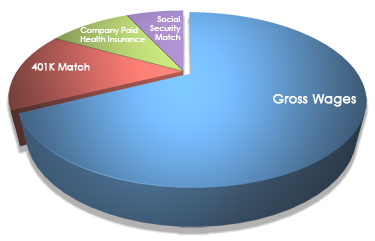Many human resources professionals highlight the importance of pay when it comes to attracting and retaining employees, yet companies are falling short on base pay and annual incentive programs, according to research from global professional services company Towers Watson.
Additionally, while the competition for talent is heating up, companies are not differentiating pay for their best performers as much as in recent years, and some continue to provide annual bonuses to employees who don’t meet performance goals.
“Pay really matters to employees when they make decisions about whether to join or stay with a company,” said Laura Sejen, managing director, Rewards, at Towers Watson. “But simply offering a competitive salary and annual bonus is not enough to win the war for talent. Employees believe that employers are falling short in how pay decisions are made and that there is much room for improvement.”
Consider these findings from the Towers Watson Global Workforce Study:
- Only one-half (50%) of employees believe they are paid fairly compared with other people in similar positions in their organizations.
- Fewer than six in 10 employees (59%) say their company does a good job of explaining their pay programs.
- Less than half (40%) report a clear link between pay and performance.
- Only one-half (50%) of employees say their managers are effective at fairly reflecting performance in their pay decisions.
Meanwhile, employers give themselves middle-of-the-road ratings on the effectiveness of their base pay programs, although they believe they are more effective at delivering annual incentives. According to the Towers Watson Talent Management and Rewards Survey, about a third of U.S. employers (35%) say their employees understand how base pay is determined, and even more (61%) say employees understand how their annual bonuses are determined. Roughly four out of 10 (38%) say managers execute their base programs well, while 53% indicate that managers execute their annual incentive programs well.
In a separate survey, Towers Watson Data Services found that U.S. employers are planning to give pay raises that will average 3% in 2015 for their exempt nonmanagement (e.g., professional) employees. That is only slightly larger than the average 2.9% increase workers received in each of the past two years. Meanwhile, annual bonuses are expected to fall short of target, the fourth consecutive year employers are unable to fully fund their annual incentive pools. However, while star performers are expected to receive significantly larger pay raises and above-target annual bonuses, employers are differentiating less for performance compared with previous years.
Exempt workers who received the highest performance ratings were granted an average salary increase of 4.5% this year, about 73% greater than the 2.6% increase given to workers receiving an average rating. Three years ago, the best-performing workers received raises that were 80% greater than raises given to average workers.
The survey noted that pay differentiation for annual bonuses is narrowing as well. The top 10% of employees are expected to receive bonuses that are 25% larger than those given to employees who met expectations. In 2010, those same top performers received bonuses that were 30% larger than those of workers who met expectations. Interestingly, almost one-third (30%) of employers plan to give bonuses to workers who failed to meet performance expectations, an increase from last year, when nearly one-fourth gave bonuses to employees with the lowest ranking.
“Despite awarding better-than-target bonuses and higher merit increases to their best performers, many companies are still not providing enough differentiation in their incentive programs for them to be effective. In fact, it appears that the extent of differentiation has declined in the past few years. This is a missed opportunity not just for recognizing top performance and improving the employment deal for this segment of the workforce, but also for creating incentives for improved productivity across the entire employee population,” said Sejen.
Thanks for reading CPA Practice Advisor!
Subscribe Already registered? Log In
Need more information? Read the FAQs
Tags: Human Resources, Payroll




